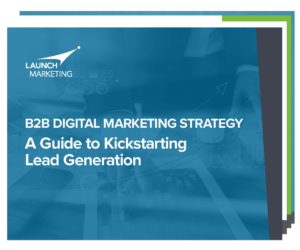
When multiple organizations undergo a B2B acquisition, each brings its own unique brand identity, recognition and attachment to the table. The journey towards successful integration is fraught with challenges. From customer confusion to employee anxiety and hesitancy in adopting changes, the risks are abundant. For marketing leaders, the challenge lies in strategically evolving messaging and brand strategy to create a cohesive and stronger entity. However, with the right approach, these challenges can be minimized. Whether you’re on the brink of a B2B acquisition or already immersed in the process, it’s crucial to consider strategies to unify your brand strategy and messaging effectively.
Amplify Your Data
Organizations that are changing as part of a merger or acquisition or those simply recalibrating their go-to-market messaging always begin with focused research. The goal of this research is to identify stakeholder and market perceptions, needs, challenges and expectations and use the findings from this work to shape the brand and message evolution. The primary means of capturing this information lies in creating engaging surveys that elicit candid and authentic responses.
You want to reach out to your current customers, prospective customers and individuals attached to recently lost deals. All of these groups of people possess an unbiased perspective of your company that your internal teams would not be able to provide.
Current customers generally have well-formed thoughts of what they do or do not like about various aspects of your organization and where they would like to see you go next. Prospects illuminate the criteria they apply in evaluating service or solution providers. Stakeholders that were part of recently lost deals shed light on the tipping points that made them go in another direction. It is important to avoid bias and ensure objectivity. To ensure this, the research should be conducted by an outside party or company.
Questions to ask your survey participants might include:
- What attributes of a brand do you look at when evaluating a service, solution or product provider?
- What do you like most about the current approach and offerings of XYZ company?
- What major or minor improvements would you like to see from XYZ company?
- What wants or needs do you think XYZ company aims to address?
The findings that come from this data will help you identify themes to both emphasize and embody in your brand messaging as well as areas that you should avoid.

Boost your lead generation with an impactful digital marketing strategy. Download the FREE Guide to Kickstarting Lead Generation now.
Engage and Empower Employees
Employee anxieties and hesitancy in adopting brand shifts are natural. Questions might arise about what this means for the employees and how it will affect the company overall. Leaders must address these points head-on and not hope that they are going to subside over time. That means proactive and thorough communication and engagement with every department and individual within your company.
A formal communication plan as part of a broader change management strategy is an integral part of any brand strategy and messaging evolution. As changes to messaging and branding are implemented or discussed, avoid making employees feel that they are not part of the process or that they are not being given enough information on what changing and why. Employees want to be heard and contribute to the processes for the new organization.
Create a Firm Foundation
Many leaders mistakenly reduce branding to the “visuals” of the company, which includes the logo, color scheme, font choice and more. Those elements are important, but the brand is projected in every single interaction with customers, prospects, employees, markets and communities. It extends beyond what people see to what they experience, and ultimately feel when it comes to your organization.
While visuals and taglines or descriptions are commonly cited as important brand elements, these elements are not often given the level of attention and care they require. If you have not done so already, create and formalize a corporate style guide to articulate your B2B messaging and describe what your company’s “because” is. Especially after a brand acquisition, it is important for branding to be clearly defined. Items it should contain include:
- Visual and written content elements such as icons and boilerplate messaging
- Logo usage including positioning, variations allowed and sizing
- Color usage with specifics on color values, spectrums and combinations
- Rules associated with brand items like how taglines are to be used and policies on co-logos
- Process steps for resolving branding questions
Your corporate style guide should also echo and reflect key brand promises. These are the core values that your organization strives to uphold in all interactions. Core values should be discussed, reviewed and agreed upon by everyone at the executive level of your company and evangelized and embodied in every interaction. For companies undergoing an acquisition, it is critical for core values to be aligned.
Progress at the Right Pace
There are many aspects of brand and message evolution that go unnoticed in mergers and acquisitions. Addressing these unnoticed details head on can distinguish a successful acquisition from a completed one.
Refrain from moving fast for the sake of moving fast. Hasty decisions based on feelings and not driven by data and aligned decision-making can have lasting and dire effects. It is wise to move deliberately and to find quick wins to elicit engagement and positivity, but do not become overtly focused on timelines or milestones. This can ultimately create unneeded chaos.
Questions executives should ask themselves before, during and after a merger or acquisition:
- What is our shared vision for our customers and market space?
- What are our key brand promises? Are we enabling and empowering their delivery?
- Does our brand strategy reflect who we are and want to be?
- Are our leaders and employees embodying and effectively adopting our brand?
Own Your Mistakes
Remember that brands are built by humans and that hiccups are bound to happen along the way. There is no problem with having challenges, but remain committed to addressing the issues as they arise and embrace them as opportunities to improve. Your brand should always be evolving and may need to shift if the needs of your customers demand it.
It is also important not to wait for mistakes to present themselves. Actively seek feedback from your teams and employees to get their thoughts on how your new brand and messaging is being perceived both internally and externally. Engage with customers directly to determine whether they are experiencing the changes in a positive way or if they have concerns. Proactively communicate to mitigate as many obstacles as possible.
Get Back to Business
While the items above are by no means an exhaustive list of the pain points of brand acquisition, they do provide you with a solid place to start. Remember, the best medicine for curing branding confusion is continuing to concentrate on solving challenges and delivering value for your customers.
Looking for help with your brand strategy after a merger or acquisition? Request a marketing consultation or contact us today! If you are looking for ways to unlock growth following your brand acquisition, request a free growth blocker workshop!
 Improve the Effectiveness of Your Digital Marketing Strategy
Improve the Effectiveness of Your Digital Marketing Strategy
There is one comment